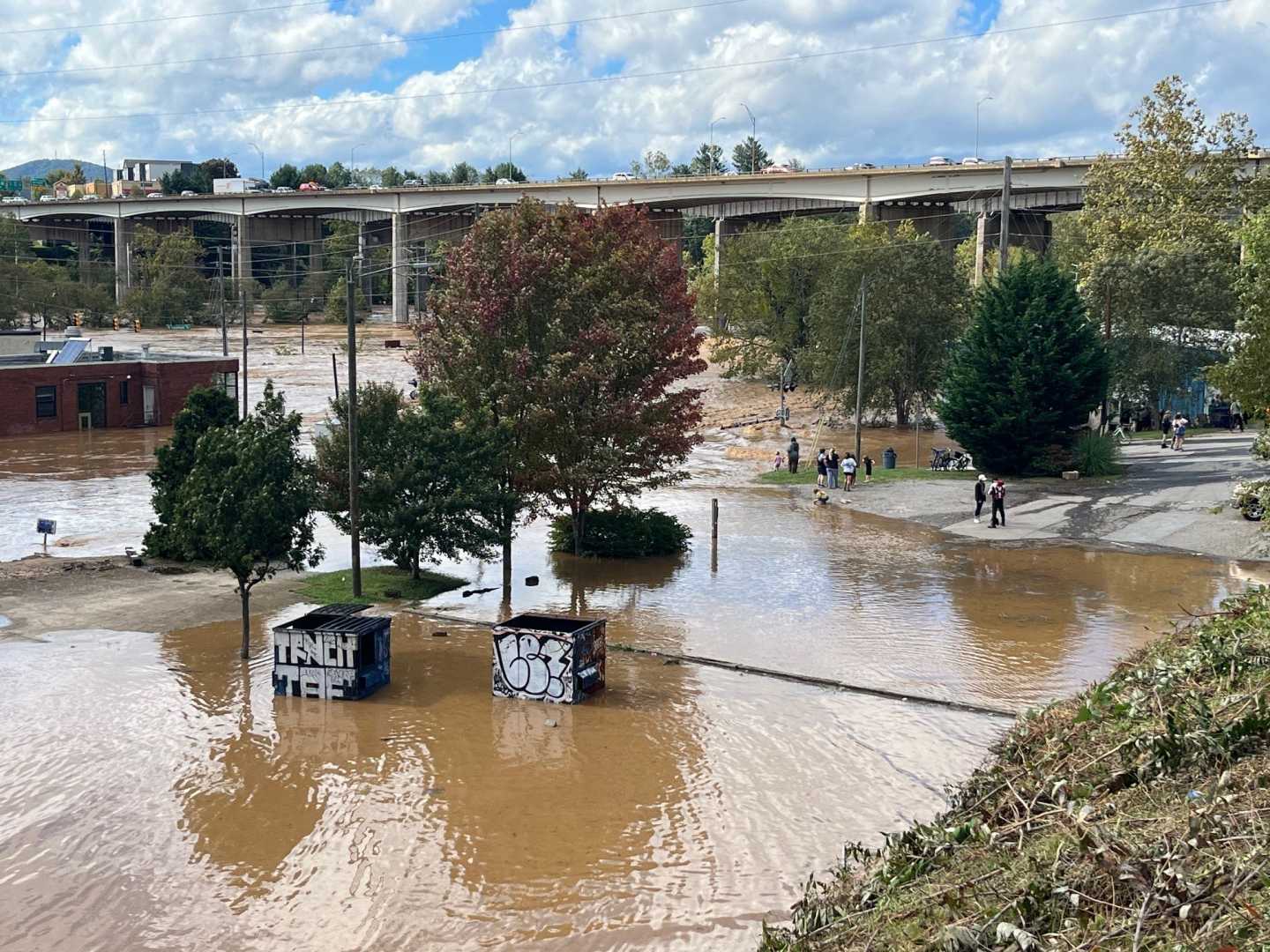News
Hurricane Helene Floods North Carolina: Residents Struggle Amid Catastrophic Damage

A historic village in western North Carolina is submerged under water after suffering devastating flooding damage caused by Hurricane Helene. Tree branches, logs, and even a dumpster were seen floating across Asheville‘s Biltmore Village, an area renowned for its unique history of being built and owned by a single individual. Residents, including Tammy Borgesen, are grappling with the aftermath, struggling to contact loved ones due to damaged infrastructure.
“We’ve been trying to get an email or a text out to just let everybody know we’re OK,” said Borgesen, who currently has water but no power at her home. Many locals, like Borgesen, are opting to wait out the storm with hopes for the best. “We’re in a weird limbo,” she added.
Water levels have reached alarmingly high points, with some areas suffering flooding that reached the tops of street signs. The fast-moving water has surged over the front-door steps of buildings, inundating small businesses as Asheville remains practically unrecognizable post-Helene.
According to residents, the extent of the flooding was unexpected. “We knew the flooding was coming but we didn’t know it was going to be this catastrophic,” one woman at the scene expressed to NBC News. The level of loss and destruction leaves residents heartbroken, amidst a backdrop of climate change conversations sparked by local opinions.
Asheville, with a population nearing 95,000, is located about 140 miles west of Charlotte. Local testimonies highlighted concerns about the impacts of climate change. “This blows my mind, and I’m really worried about friends, neighbors, and businesses down here by the river,” another resident shared with NBC News. “This is just a reminder to me that climate change is going to affect all of us. No one is safe from the impacts of climate change, and we really need to take action now.”
The devastation followed Helene’s landfall in Georgia, causing havoc throughout the southern United States. As of Saturday, at least 53 fatalities have been confirmed while approximately three million customers remain without power across South Carolina, North Carolina, Georgia, Florida, and Virginia, according to Poweroutage.us figures.
The storm, currently classified as a post-tropical cyclone, has left a severe impact across the southeastern region, with rescue operations complicated by dangerous conditions. President Joe Biden approved emergency declarations for several affected southern states, including Georgia, Florida, Alabama, North Carolina, Tennessee, and South Carolina, in order to facilitate federal assistance. Biden has mobilized over 1,500 federal personnel for search and rescue, medical, and power restoration efforts.
The threat of Helene was not limited to Asheville alone. Many regions in North Carolina, such as Chimney Rock and surrounding areas, experienced intense rainfall and flash flooding. The highest reported rainfall was 29.5 inches in Busick Raws, Yancey County, prompting swift evacuations in regions near Lake Lure Dam.
On Friday evening, local government sources indicated that the water levels at Lake Lure had stopped rising and had begun to recede. Emergency personnel successfully rescued over 25 individuals through joint efforts involving swift water rescue teams, emergency medical services, fire departments, and local law enforcement. Despite these efforts, many areas still suffered from communication outages, particularly in Lake Lure. As reported, North Carolina alone had approximately 635,887 total outages on Saturday afternoon.












